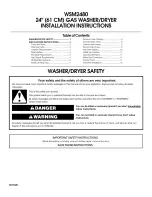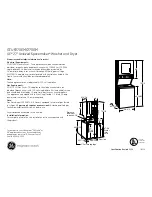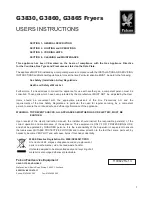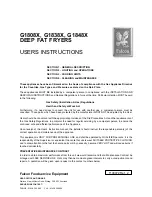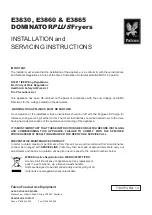
Operator’s Manual: Dura Dry II
MSDS
© SP Industries, Inc.
Rev.004, 12/07
54
Odor : Slight ethereal
Form : Compressed Gas
Color : Clear, colorless
STABILITY AND REACTIVITY
Chemical Stability
Material is stable. However, avoid open flames and high
temperatures.
Decomposition
This product can be decomposed by high temperatures (open
flames, glowing metal surfaces, etc.) forming HF, COF2 or
CO. These materials are toxic and irritating. Contact
should be avoided.
Polymerization
Polymerization will not occur.
TOXICOLOGICAL INFORMATION
# Animal Data
TRIFLUOROMETHANE:
Inhalation 4-hr LC50 : >663,000 ppm in rats
Material is untested for skin and eye irritancy, and for
animal sensitization.
Effects from single high inhalation exposure to
Trifluoromethane include anaesthetic effects, and
nonspecific effects such as weight loss were observed at
concentrations >22%. No cardiac sensitization was observed in dogs
after breathing 800,000 ppm for periods of 5-10 minutes following
epinephrine challenge. In another test,
dogs exposed to up to 30% or up to 50% (with aditional
oxygen), had no positive responses. No cardiac
sensitization occurred in baboons exposed by inhalation to 10%, 30%,
50%, or 70% Trifluoromethane before or after an
epinephrine challenge; there was a dose-related decrease in heart
rates and differences in respiratory rates during
exposure.
No animal tests are available to define the carcinogenic
hazards of Trifluoromethane. The maternal and developmental NOAEL was
50,000 ppm. Trifluoromethane is not considered a unique developmental
hazard to the conceptus. There were no developmental or reproductive
effects.
Tests have shown that Trifluoromethane does not produce
genetic damage in bacterial or mammalian cell cultures. It has not
produced genetic damage in tests on animals.
HEXAFLUOROETHANE:
Inhalation 4-hour LC50: >800,000 ppm in rats


















